Building a DIY cedar raised garden bed can transform your gardening experience, providing an aesthetic and practical upgrade to any outdoor space. With the benefits of cedar, including its durability and natural resistance to decay, it becomes an unbeatable choice for gardeners aiming for longevity and success in their gardening endeavors. The process of building a cedar raised garden bed can be simple and rewarding, giving your plants a healthy and elevated home to flourish in.
To get started, exploring 10 free DIY cedar raised garden bed plans can offer you a range of options tailored to fit different spaces, budgets, and skill levels. From the basic steps to more detailed constructions, these plans serve as an invaluable guide to creating the perfect garden setup. This comprehensive collection not only explains the building process but also inspires gardeners to take their gardening projects into their own hands. Ready to enhance your garden with a durable and attractive cedar raised bed? Let’s dive into these 10 free DIY cedar raised garden bed plans with step by step instructions.
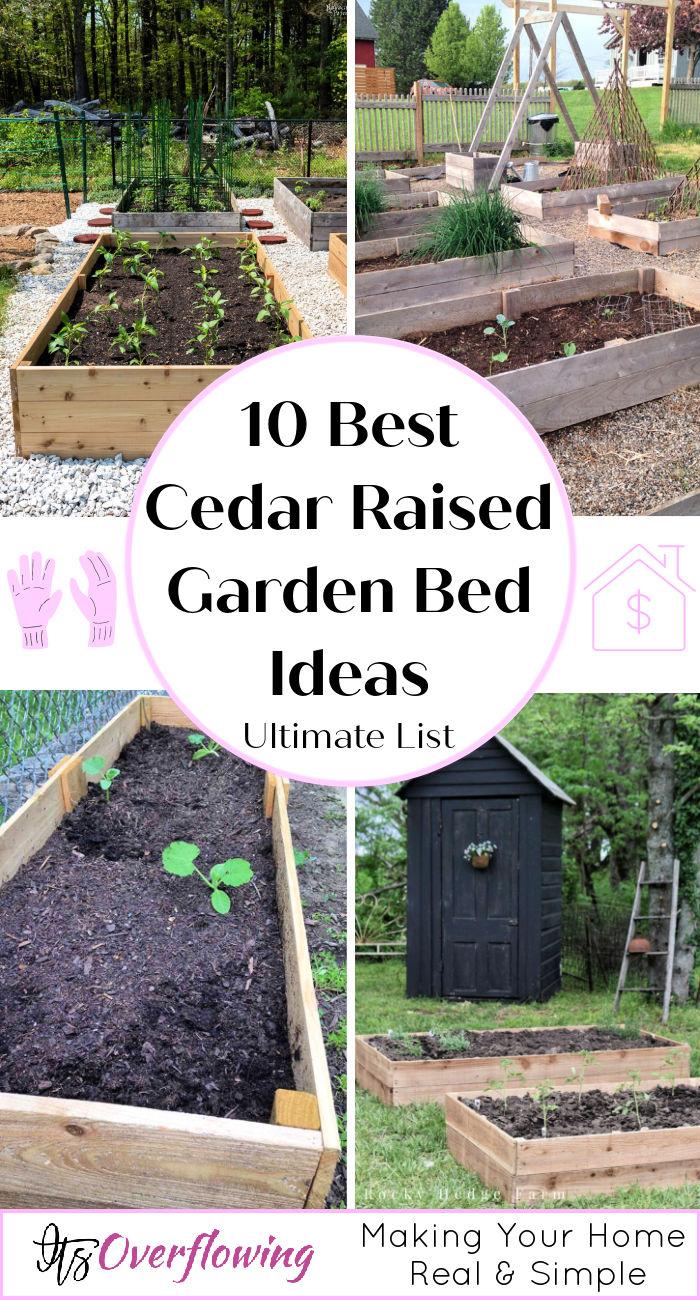
Why Opt for Cedar in Raised Garden Beds?
- Durability: Cedar wood boasts a natural resistance to decay and rot, making it an excellent choice for withstanding outdoor elements. Its longevity ensures that your raised garden beds remain sturdy and functional year after year without the need for frequent replacements.
- Pest Resistance: Cedar is known for its ability to repel insects, including common garden pests like termites and ants. This characteristic helps protect your garden from unwanted invaders that could harm your plants.
- Aesthetic Appeal: The rich, warm tones of cedar wood add a natural and rustic charm to your garden space. Its attractive appearance enhances the overall look of your outdoor area, creating an inviting atmosphere for you and your visitors.
- Eco-Friendly: Cedar is a renewable resource and when sourced responsibly, it’s an environmentally-friendly option for gardeners. It doesn’t require chemical treatments like some other woods, which means it’s safer for growing edible plants and better for the soil.
- Improved Drainage and Soil Quality: Raised beds filled with quality soil promote better drainage than ground-level gardens. This is especially important in areas with heavy clay or poorly drained soils. Cedar’s durability ensures that the structure holds up well, keeping the soil aerated and roots healthy.
By choosing cedar for your raised garden beds, you’re investing in a long-lasting, beautiful, and eco-conscious solution for your gardening needs. It’s a choice that not only benefits your plants but also contributes positively to the environment.
How to Build a Cedar Raised Garden Bed
Building a cedar raised garden bed is a rewarding project that enhances your gardening experience by providing a rich environment for your plants to thrive. Here’s a straightforward guide on why and how to create one:
- Durability: Cedar wood is naturally resistant to rot, decay, and pests, making it an ideal choice for outdoor gardening projects. It ensures that your raised bed will last for many seasons.
- Better Soil Conditions: A raised bed allows you to control the soil quality more effectively. You can fill it with the perfect blend of soil for your plants, improving drainage and nutrient content.
- Ease of Access: Raised beds are easier on your back. You don’t have to bend down as far to tend to your plants, making gardening more accessible and enjoyable, especially for those with mobility issues.
Steps to Build a Cedar Raised Garden Bed
- Plan Your Size: Determine the size of the raised bed. A typical size is 4 feet by 8 feet, but you can adjust based on your space.
- Gather Materials: You’ll need cedar boards, corner posts, screws, a drill, and a saw if you need to cut the boards to your specified lengths.
- Assemble the Frame: Connect the cedar boards to the corner posts to form a rectangular frame. Ensure it’s level and square.
- Place the Bed: Choose a sunny spot in your yard. Remove any grass under the bed area and set your frame in place.
- Fill With Soil: Fill your new raised bed with a mix of compost, topsoil, and any other amendments your specific plants require.
Building a cedar raised garden bed is straightforward and immensely rewarding. Not only does it enhance the visual appeal of your garden, but it also contributes to the health and productivity of your plants.
FAQs about DIY Cedar Raised Garden Bed
Discover essential tips and tricks for building your own cedar raised garden bed. Get all your FAQs answered and start growing today!
What materials do I need for a cedar raised garden bed?
To build a cedar raised garden bed, you will need:
- Cedar boards (specific sizes depend on your desired dimensions)
- Corner posts for stability (4×4 cedar works well)
- Screws or nails designed for outdoor use
- Tools: A drill (if using screws) and a saw (if cutting wood to specific lengths)
How long does it take to build a cedar raised garden bed?
The time it takes can vary based on your skill level and the bed design, but generally, you can expect to spend a few hours from start to finish. Preparing the site and filling the bed with soil can add extra time.
Can I build a cedar raised bed on grass?
Yes, you can build it directly on grass. However, it’s best to remove the grass layer where the bed will sit to prevent grass and weeds from growing into the bed. Adding a bottom barrier (like landscaping fabric) is also recommended for added weed prevention.
How deep should my cedar raised garden bed be?
A minimum depth of 6 inches is recommended for most plants, but 12 inches is ideal, especially for vegetables. This depth supports good root development and drainage.
Do I need to treat cedar wood with chemicals?
Cedar is naturally resilient against rot and pests, making it an excellent choice for organic gardening. You do not need to treat cedar wood with chemicals. Leaving it untreated helps ensure your garden bed remains safe for edible plants.
What is the best soil mix for a cedar raised garden bed?
A mixture of compost, topsoil, and aeration components (like perlite or vermiculite) works well. Adjust the blend according to the specific needs of the plants you wish to grow.
How often should I replace the cedar wood?
Cedar is long-lasting and typically does not need to be replaced for 10-15 years under normal garden conditions. However, its lifespan can vary based on climate, soil conditions, and how well it’s maintained.
Building your cedar raised garden bed can be a simple, enjoyable project that enhances your gardening experience. With these FAQs in mind, you’re well on your way to growing a thriving garden.
10 Free DIY Cedar Raised Garden Bed Plans
Discover 10 free DIY plans for cedar raised garden beds. Make your own beautiful and productive garden with these step-by-step instructions.
1. How to Build a Cedar Raised Garden Bed
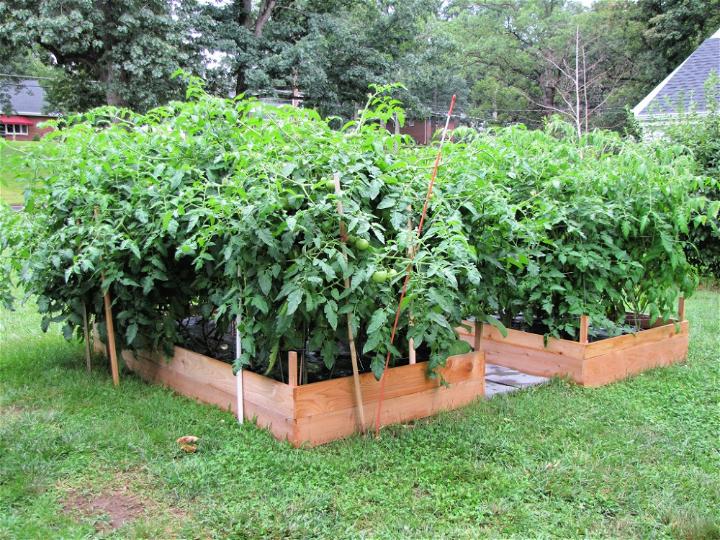
Eager to cultivate your own garden haven? Building a cedar raised garden bed is a rewarding DIY project that enhances your outdoor space. Dengarden‘s guide by Bill De Giulio offers step-by-step instructions on creating a durable and beautiful raised bed that’s perfect for growing a variety of plants.
With tips on selecting the right location, choosing materials, and filling your garden bed with soil, this guide makes it easy to start your gardening journey. Dive into the details and learn how to construct a raised bed that will yield bountiful harvests for years to come.
2. Simple DIY Cedar Raised Garden Bed
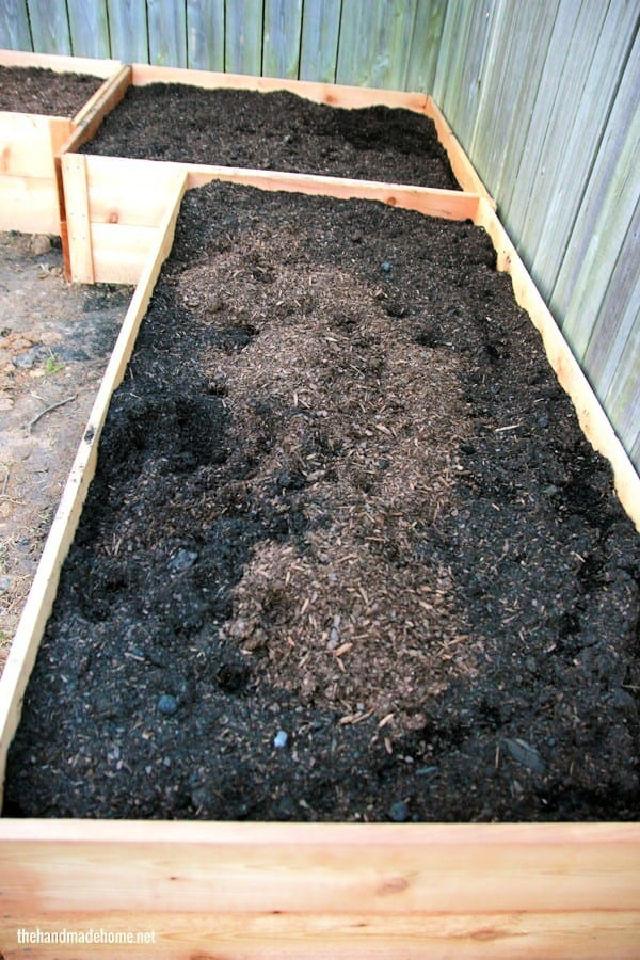
Building a garden box can be a rewarding DIY project that enhances your outdoor space and supports your green thumb ambitions. Our step-by-step guide makes constructing a durable and attractive cedar garden box straightforward and manageable. With a detailed supply list, precise cut instructions, and a clear assembly process, you’ll be on your way to creating a raised bed perfect for growing a variety of plants.
The natural beauty of cedar not only adds charm to your yard but also offers a rot-resistant structure for your gardening needs. Embrace the satisfaction of crafting your own garden box and enjoy the benefits of homegrown produce or a flourishing flower bed. For those eager to dive into gardening or enhance their existing setup, our tutorial offers the practical advice you need to succeed. thehandmadeh
3. Handmade Cedar Raised Garden Bed
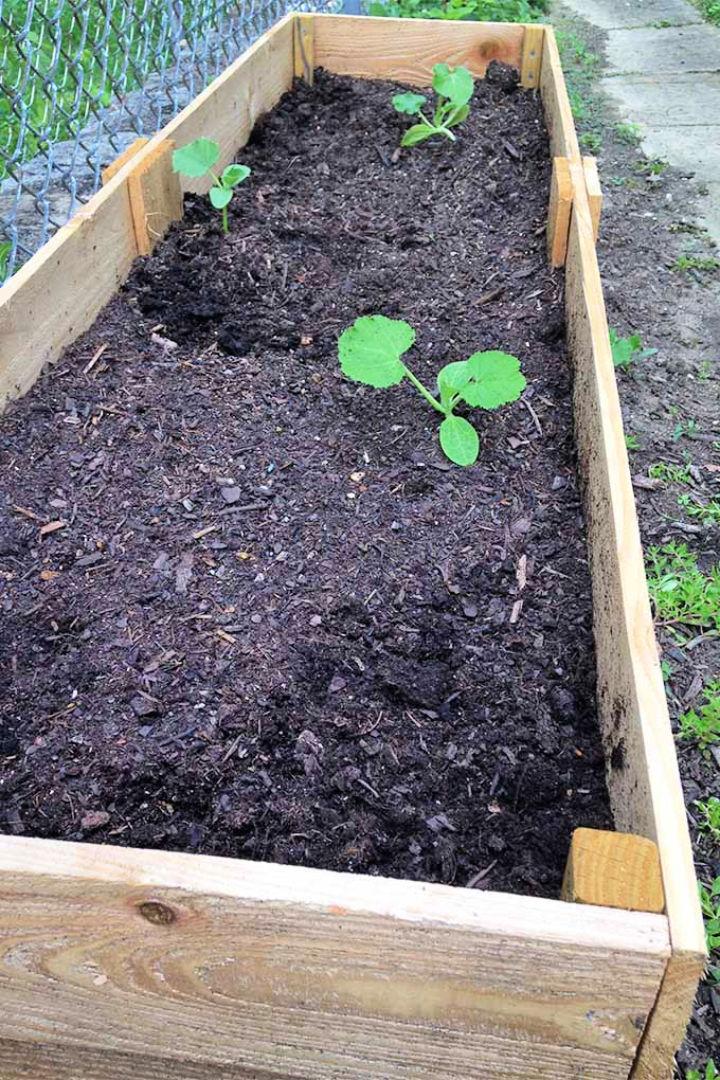
Building your own raised garden bed can be a rewarding project, enhancing your gardening experience and giving root veggies the perfect home. Gardener’s Path provides a comprehensive guide to constructing a raised bed with simple materials like cedar fence posts and pressure-treated lumber. With a total investment that’s manageable for many budgets, you can create a functional and charming addition to your garden.
The step-by-step instructions make assembly straightforward, ensuring your plants have a well-drained, nutrient-rich environment. Adjust the design to fit your space and preferences, and remember to keep the soil moist, especially for young plants. Get ready to elevate your gardening game with a DIY raised bed that’s both practical and aesthetically pleasing.
4. Building Cedar Board Raised Garden Beds
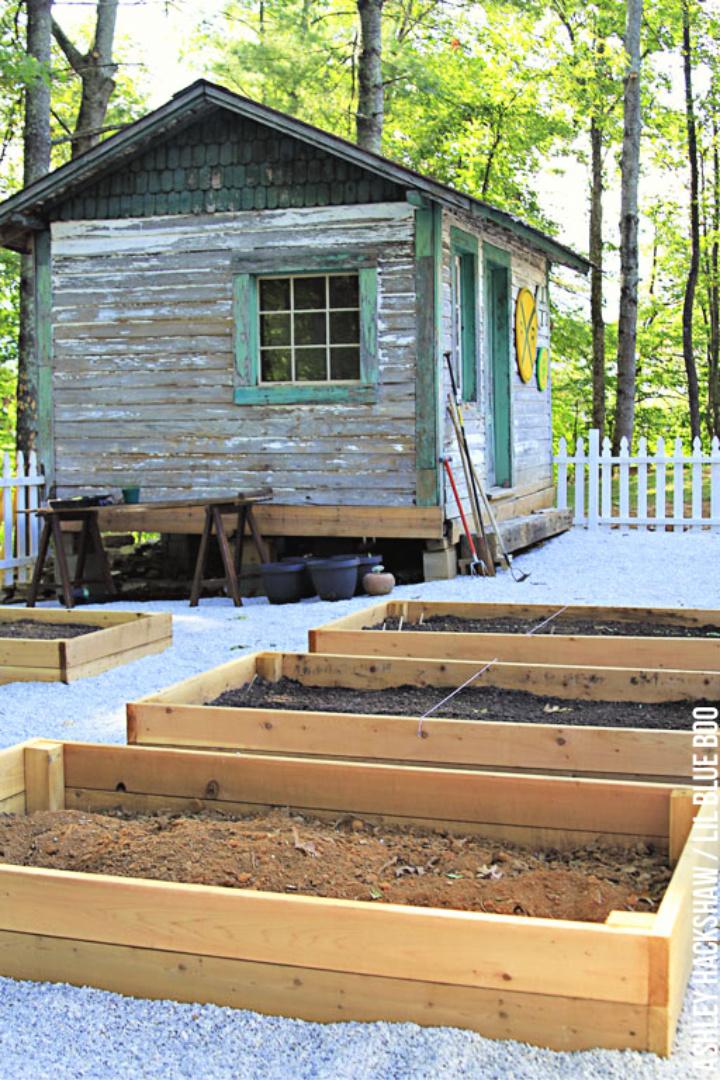
Learn how to construct raised cedar garden beds with Ashley Hackshaw’s instructive guide on Lil Blue Boo. Discover the benefits of using cedar for a chemical-free garden and why it’s preferred over pallets. The guide provides step-by-step instructions on cutting and assembling the cedar, preparing the site, and mixing the ideal soil combination for healthy plant growth.
Find out how to add lime to balance soil pH and get tips for planting a thriving fall garden. Cedar’s natural durability makes it an excellent choice for long-lasting garden beds, ensuring an organic gardening experience. Explore the process of creating a sustainable space for your plants with this helpful and engaging tutorial.
5. DIY Cedar Raised Vegetable Garden Beds
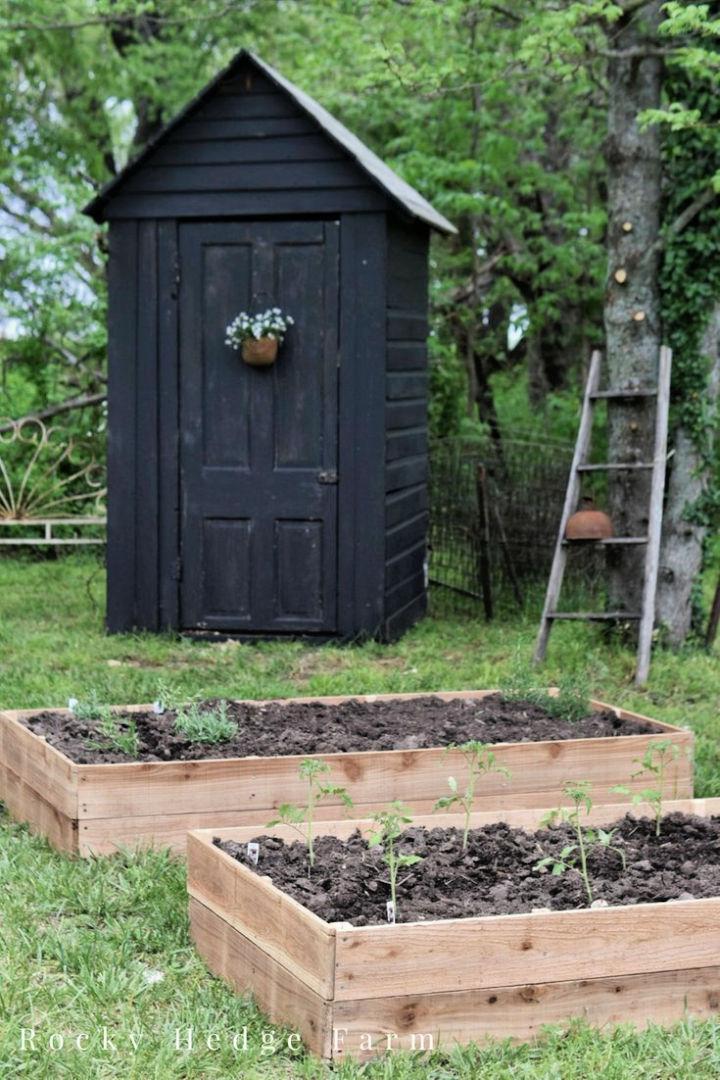
Discover how to construct durable and eco-friendly raised garden beds using cedar fence pickets with guidance from Rocky Hedge Farm. This DIY project is perfect for those who want to grow their own organic produce while also adding aesthetic appeal to their garden space. The tutorial walks you through the process step by step, making it simple and affordable.
By building your own cedar raised beds, you’ll enjoy benefits like extended growing seasons, reduced weeds, and the joy of cultivating a flourishing vegetable or flower garden. Get ready to enhance your gardening skills and create a bountiful outdoor retreat.
6. Make a Cedar Raised Garden Bed With a Metal Fence
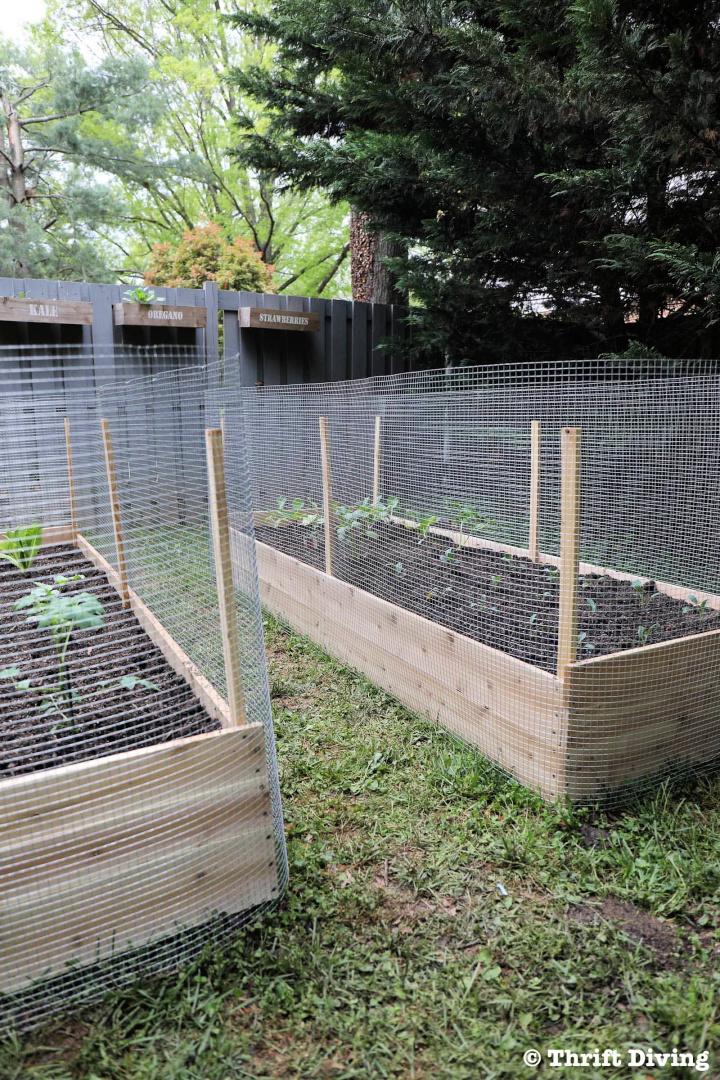
Building a DIY raised garden bed can transform your gardening experience, offering a controlled environment for your plants to thrive. Thrift Diving Blog provides a comprehensive guide on constructing a raised bed from durable cedar and safeguarding it with a metal fence.
With practical tips on materials, cutting, assembly, and soil preparation, this tutorial empowers you to cultivate a bountiful garden, even if clay soil challenges your green thumb. Engage in this rewarding project and enjoy the fruits (and veggies) of your labor for seasons to come.
7. Make Your Own Cedar Raised Garden Beds
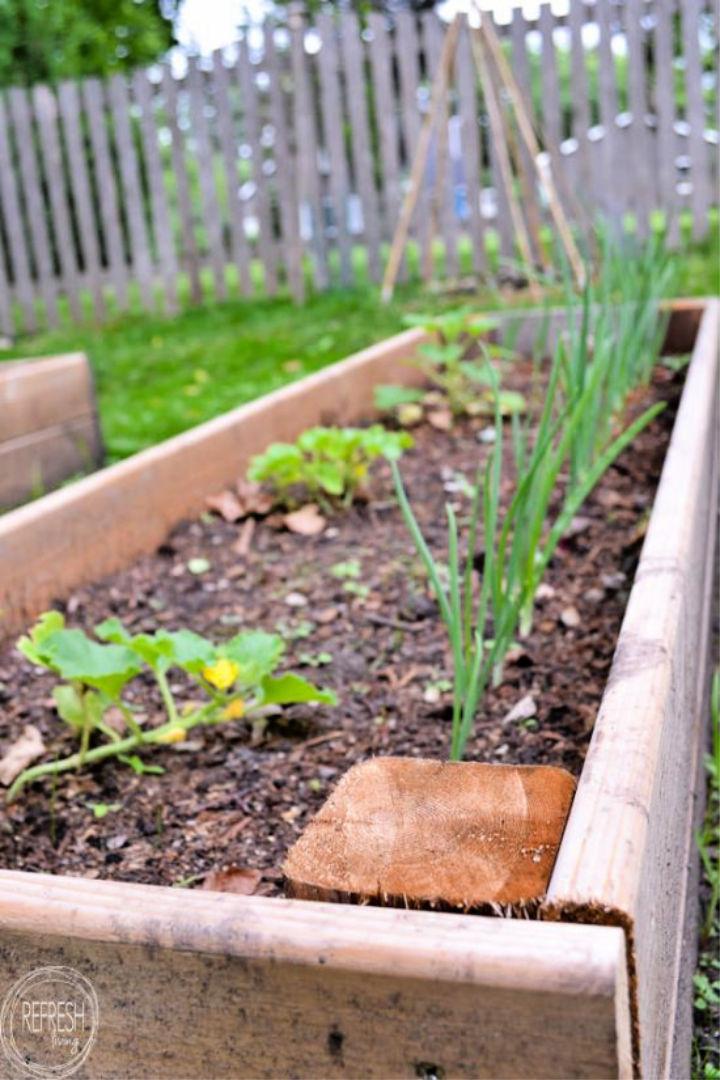
Ready to elevate your backyard with a functional and attractive addition? Refresh Living presents an easy-to-follow guide for constructing your very own raised garden beds using cedar wood. Ideal for growing a bountiful vegetable garden, this tutorial takes you through the necessary supplies and steps to create a durable, rot-resistant bed. Plus, learn how to mix the perfect soil to ensure your plants thrive. Get ready to transform any outdoor space into a lush, productive haven with these straightforward instructions.
8. How to Make Cedar Raised Garden Beds Under $25
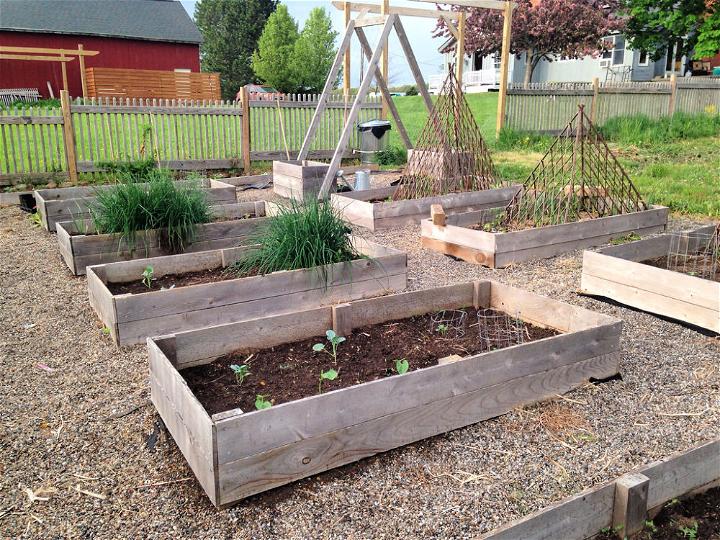
Ready to transform your yard into a thriving garden with raised beds on a budget? Kick Ass or Die reveals how to construct sturdy, cost-effective raised garden beds for just $25 each. Kit’s engaging guide offers step-by-step instructions, from selecting affordable cedar fence boards to the final assembly, ensuring a smooth process even if you’re new to woodworking or gardening.
With a focus on practicality, the beds are designed to be lightweight for easy maneuverability. Dive into the blog post to learn how to build your own raised garden beds and get ready to enjoy the fruits (and vegetables) of your labor.
9. DIY Functional Cedar Raised Garden Bed
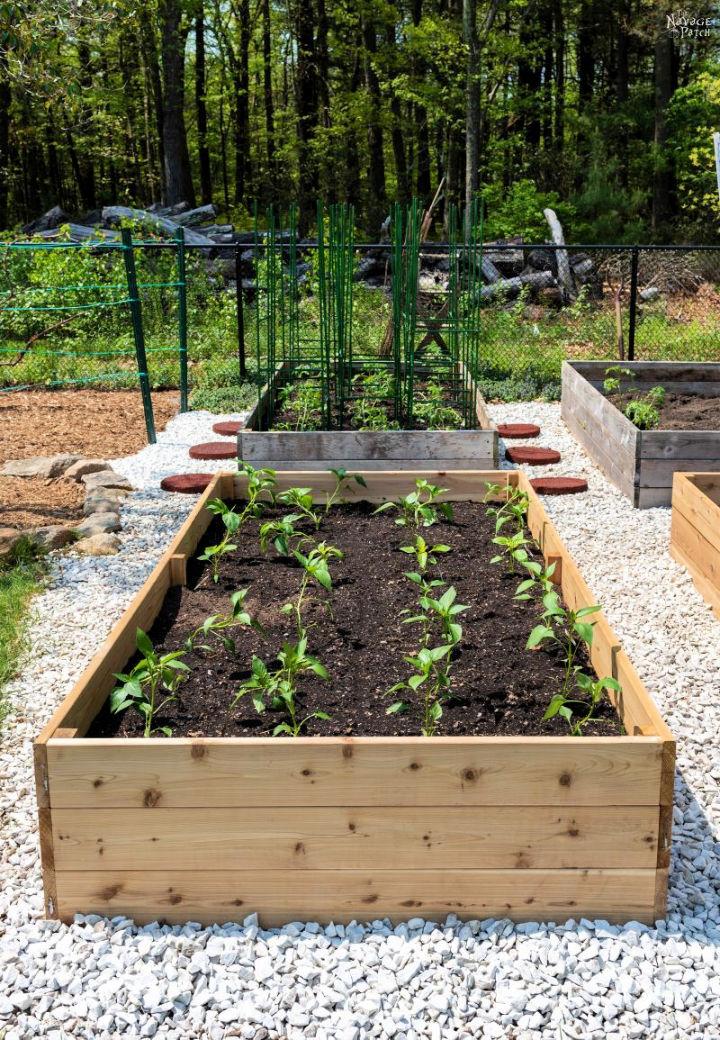
Elevate your gardening experience with a DIY raised garden bed, a simple and effective way to make your backyard flourish. Greg from The Navage Patch offers a step-by-step guide that transforms cedar boards into a sturdy and stylish garden bed, perfect for growing vegetables or flowers.
With practical tips and a focus on ease, this tutorial is designed to save your back and knees from the strain of ground-level gardening. Embrace the convenience of a raised bed and enjoy the beauty and bounty it brings to your outdoor space.
10. How to Build Cedar Raised Garden Beds
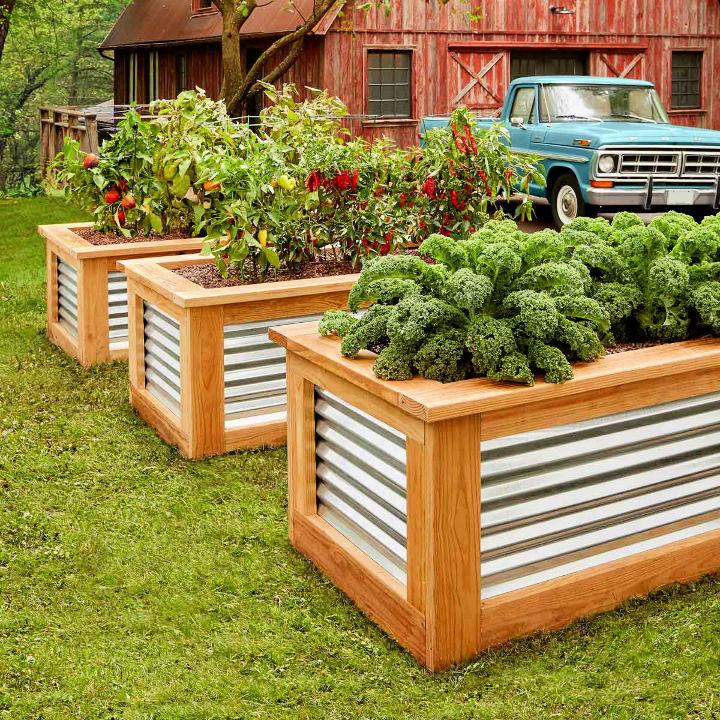
Building a raised garden bed enhances your yard’s aesthetic while making gardening more accessible and enjoyable. Family Handyman‘s guide provides a clear, step-by-step process that’s perfect for DIY enthusiasts. From selecting the right materials to assembling and accessorizing your garden bed, this resource is designed to help you create a functional and attractive gardening space. With tips on soil filling and pest protection, you’ll be equipped to start your raised bed gardening project with confidence. Get ready to elevate your gardening game with this practical and engaging guide.
11. Homemade Raised Garden Beds Using Cedar Boards
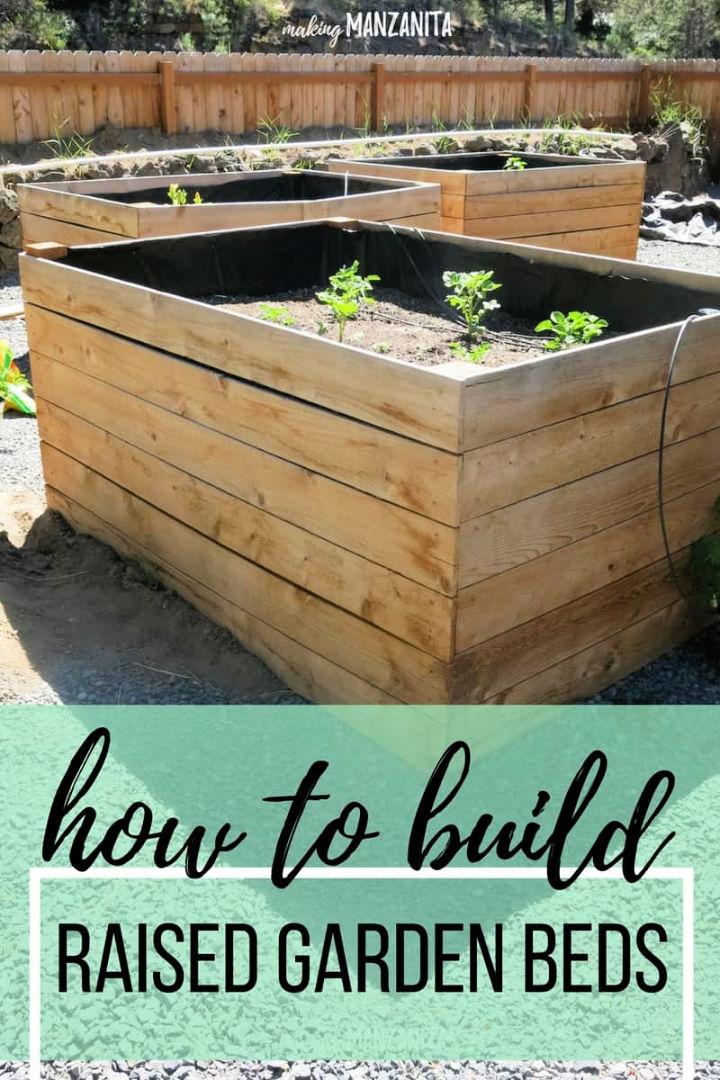
Making your own cedar raised garden beds is a fantastic way to bring a touch of nature and self-sufficiency into your backyard. Making Manzanita‘s guide offers a straightforward and cost-effective method to build durable and attractive garden beds using cedar fence pickets. These beds are not only perfect for cultivating a variety of vegetables, fruits, and flowers but also add aesthetic appeal to your outdoor space.
With detailed instructions that cover everything from preparing the ground to planting your garden, this DIY project is manageable for anyone looking to enhance their gardening experience. The use of cedar wood is especially beneficial due to its natural resistance to rot and decay, ensuring that your garden beds remain in great condition for seasons to come. So, roll up your sleeves, grab your tools, and get ready to transform your backyard into a flourishing garden haven.
Conclusion:
In conclusion, building a cedar raised garden bed offers a tremendous opportunity to enhance your gardening experience. With the 10 Free DIY Cedar Raised Garden Bed Plans we’ve explored, gardeners of all levels can find a project that suits their space, budget, and expertise. Cedar’s durability and natural resistance make it an ideal choice for a lasting garden foundation. By embracing these cedar raised bed plans, you’ll enrich your garden’s aesthetic and functionality, setting the stage for a thriving outdoor sanctuary. Let the journey of building your DIY cedar raised garden bed begin today, and watch as your gardening dreams take root and flourish.
